I previously wrote an article completely bashing the XFL list of eight cities that make no sense at all. All the while, another new football league popped up right under my nose. Although the XFL made the impressively questionable decision to almost entirely play in cities that already have an NFL team, or two, the Alliance of American Football has chosen to play in a majority of cities without an NFL team. In fact, I chose 6 of the 8 cities the AAF selected for possible XFL cities. At least one football league was wise enough to take my suggestions. Here is the list of 8 AAF Cities:
[one_half padding=”20px 20px 20px 20px”]
EAST
[/one_half][one_half_last padding=”20px 20px 20px 20px”]
WEST
[/one_half_last]
Atlanta Legends
- Eastern Conference
- Atlanta, Georgia: 486,290
- Georgia State Stadium: 24,333

Starting things off, this was the one selection that surprised me, as it was the only city the AAF chose that already had an NFL team in it. I can’t be too upset however as they only chose one NFL city instead of only choosing one without an NFL team like the XFL. At least Atlanta loves football. In fact, Wallethub conducted a ranking of the best football cities in America based on the number of NFL and college football teams, average football game ticket prices, attendance, stadium capacity and fan engagement. They ranked Atlanta the 11th best football city and in my personal opinion, could have been ranked even higher.
At least the AAF chose to not play their games in the same stadium as the Falcons. Instead, the Legends will be playing their home games in the remnants of Turner Field, once the home of the Braves prior to the construction of SunTrust Park. The newly named Georgia State Stadium was completely redesigned in 2017 as a permanent football stadium with the capacity of 24,333. Originally constructed for the 1996 Summer Olympics, the rejuvenation of this stadium was an excellent use of a historic arena that the AAF was brilliant to select. With a passion for football, an excellent new stadium and the 6th largest metro population in the US, Atlanta might actually be the best selection for an additional professional football league.
Birmingham Iron
- Eastern Conference
- Birmingham, Alabama: 210,710
- Legion Field: 71,594

In my opinion, Birmingham has been a professional football sleeping giant for a while. Alabama is a great bridge in the gap of Deep South NFL between Atlanta and New Orleans with a state population of nearly 5 million, larger than Louisiana. The selling point for Alabama isn’t its size however but the passion the locals have for football. If the Iron Bowl rivalry wasn’t enough evidence, Birmingham has continuously been the highest ranked TV market for college football year after year; regardless of the extreme size difference it has with other larger cities. Obviously the AAF isn’t college football but I have a feeling the people of Alabama will find some time in between their busy Roll Tide/War Damn schedules to watch some professional football as well.
If you haven’t already figured it out, there’s clearly some heavy correlation between the city of Birmingham and Iron. Birmingham has been known as the “Steel City” or “Pittsburgh of the South” due to its role in the steel industry that caused a post-civil war economic boom. The city has since been most notably nicknamed the “Magic City” from the city’s rapid growth. That’s why the AAF Birmingham Iron is such a perfect name. I only hope it is good enough to draw a large crowd to their games in Legion Field. With a capacity of 71,594 and constant rumors of possible demolition, the former “Football Capital of the South” could use the rejuvenation. Who knows, maybe an AAF team combined with UAB’s football success will be enough of a push to finally give the “The Old Gray Lady” the renovations she deserves.
Memphis Express
- Eastern Conference
- Memphis, Tennessee: 652,236
- Liberty Bowl Memorial Stadium: 58,207
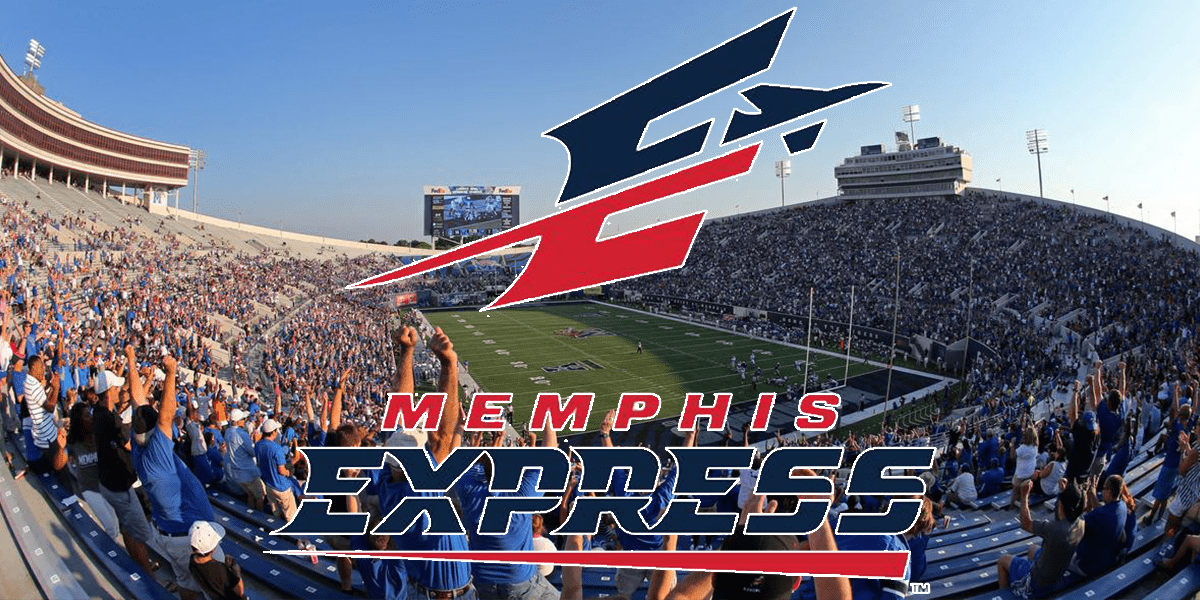
In 1996, the Houston Oilers chose to forever betray the people of Houston and relocate to Tennessee. After only one year at the Liberty Bowl Memorial Stadium in Memphis, the hipsters in Nashville claimed the Oilers and changed their name to the Titans. Even though it was the larger city and already had a stadium, Memphis only managed to host a professional football team for a single year. Like Orlando, Memphis is a city that is long overdue for a pro football team. The Liberty Bowl Memorial Stadium is a giant stadium that is used by the University of Memphis and the perfect venue for an AAF team. With a capacity of 58,207, I don’t think the Express will need to worry about expanding anytime soon.
Also similar to Orlando is the fact that Memphis has already had an XFL team. Although it appears Memphis doesn’t know how to keep a professional football team, I think the city has just had some bad luck in the past. Memphis is a large city that has already proven their ability to support professional sports teams and was an obvious choice that the XFL once again, managed to miss.
Steve Ehrhart, the former vice president and general manager of XFL Memphis Maniax and current executive director of the Liberty Bowl stated, “Memphians are smart. They know that we had quality operations here but it was the leagues around them that failed. Therefore, the question is how will the league do, but they’re off to a great start.”
Orlando Apollos
- Eastern Conference
- Orlando, Florida: 280,257
- Spectrum Stadium: 44,206
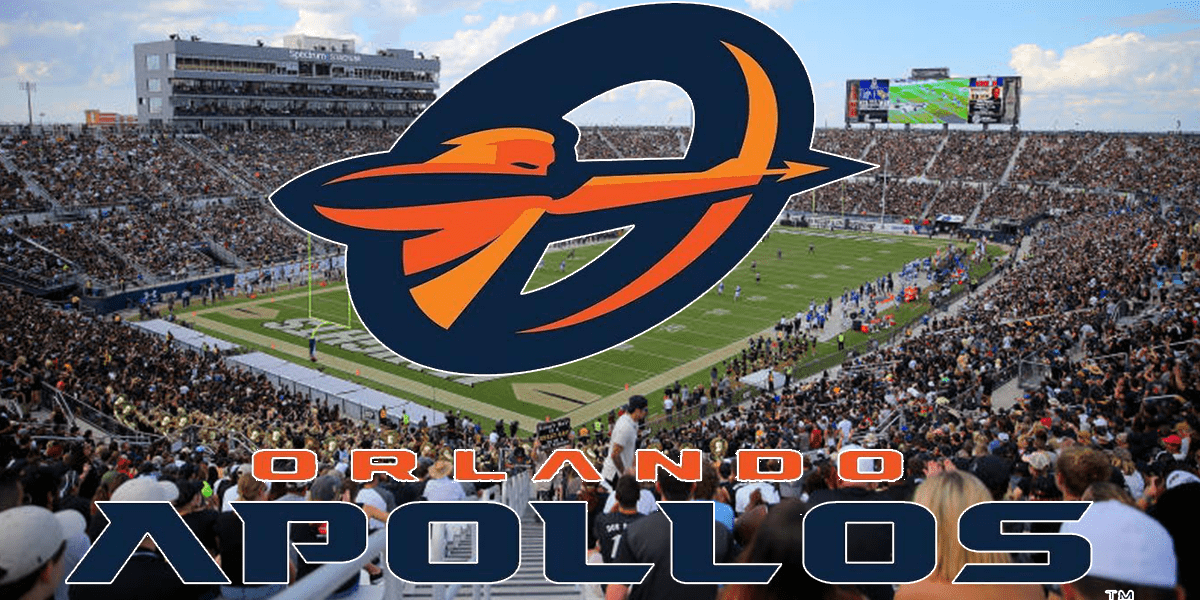
Similar to San Antonio, the lack of professional football in Orlando is baffling. In one of the largest cities in one of the most populated states, it seems interesting that the NFL has never considered moving here. I understand the relatively close distance between Orlando and Tampa Bay has surely been a major factor in choosing to skip the Theme Park Capital of the World. Nevertheless, Orlando is clearly a large enough city for a professional football team and has sustained an NBA team for 30 years.
Although I would have initially thought the AAF would have selected the Camping World Stadium as their Orlando home, the decision to go with UCF’s Spectrum Stadium was much more brilliant. While Camping World is a 60,000+ capacity professional football stadium that could use a tenant, the XFL already made that mistake. In 2001, the Orlando Rage hosted their season opener at the stadium, only to tarp off the entire upper deck for a better TV appearance when they only sold 36,000 tickets. The 44,206 capacity Spectrum Stadium will be a much better size for the AAF with no tarp required. I’m hoping the Orlando Apollos are able to sell out the stadium and actually compete with the neighboring NFL Buccaneers who only attract an average of about 60k to their games in Tampa.
Arizona Hotshots
- Western Conference
- Tempe, Arizona: 185,038
- Sun Devil Stadium: 57,078
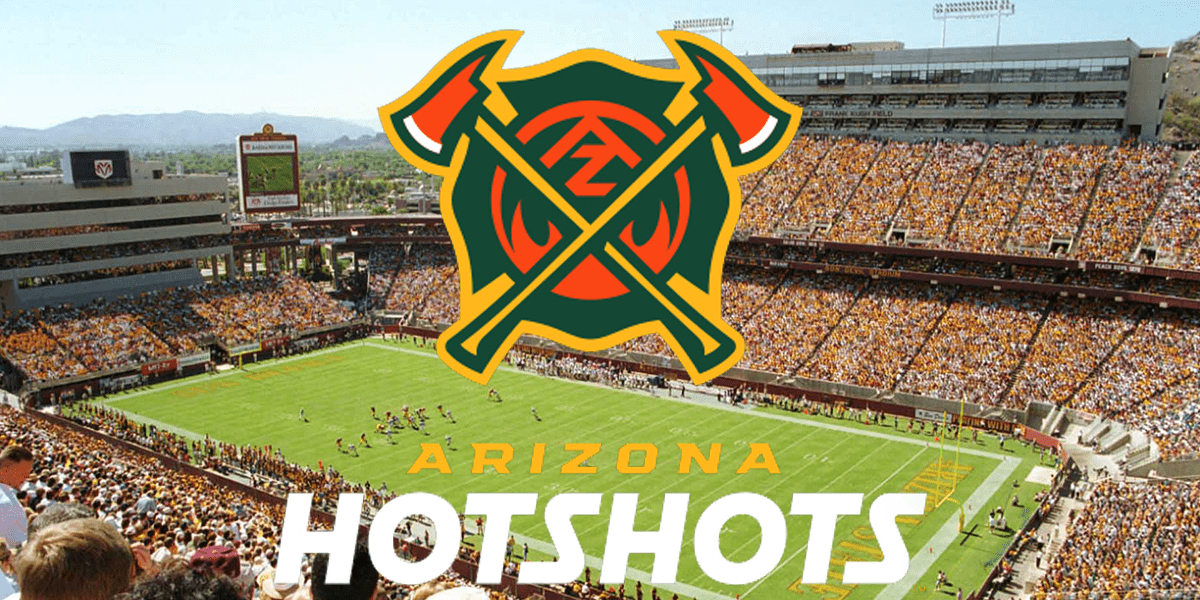
Tempe, Arizona was the absolute closest city the AAF could have selected without actually choosing a city that already had an NFL team. For this, the Arizona Hotshots were one of the worst choices for the AAF, in my opinion. That being said, at least they didn’t choose cities with multiple NFL teams like the XFL did with Los Angeles and New York. The silver lining of this selection at least was the fact that Wallethub actually ranked Glendale, AZ as the 7th best football city in America, which is just on the other side of Phoenix from Tempe. Neighboring the 11th largest metro population that is growing at nearly 13 percent, Tempe might not have been as bad of a selection as I originally thought.
The thing Tempe is most known for is being the home of Arizona State University. It should come as no surprise then that the Arizona Hotshots will be using the Sun Devil Football Stadium as their home field. The Sun Devil Stadium is currently undergoing a $304 million renovation that is scheduled to be completed by June 2019. The renovations are expected to increase the stadium’s capacity to around 60,000. This will obviously be more than enough room for an AAF team and will serve as a beautiful stadium. Although Tempe was far from my favorite AAF city addition, it could potentially work and still better than almost anything the XFL chose.
Salt Lake Stallions
- Western Conference
- Salt Lake City, Utah: 190,884
- Rice-Eccles Stadium: 48,807
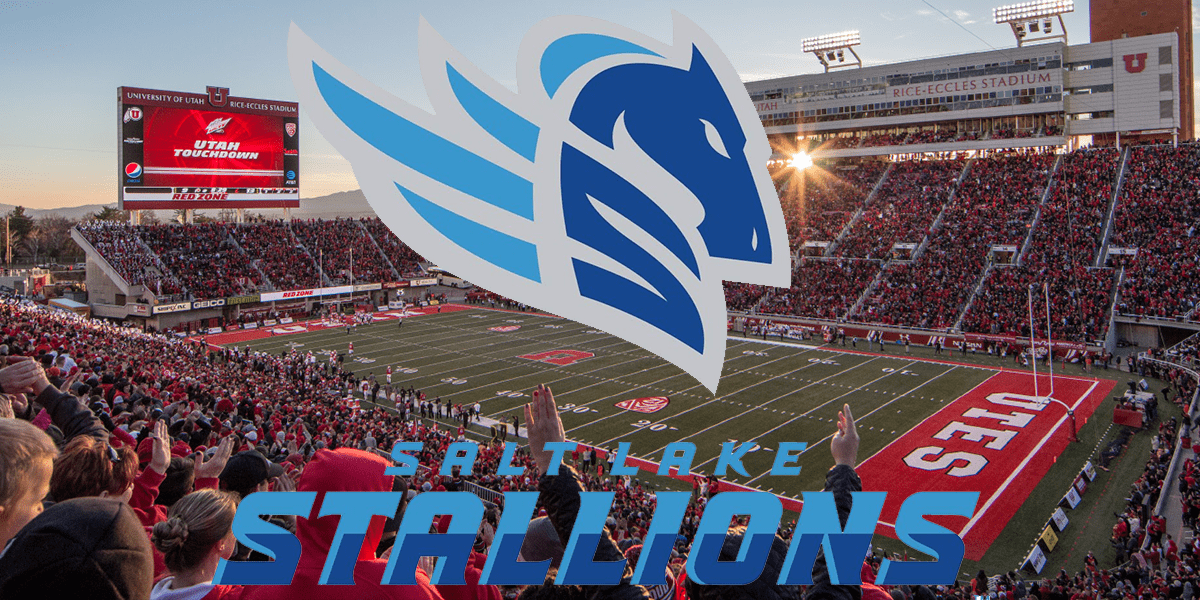
Salt Lake City is in the middle of a professional football wasteland called the Rocky Mountains. With a metro population of 1.2 million, the closest NFL team is in Denver, 8 hours away. The fasted route to get there is actually driving through Wyoming to avoid driving up the mountainous terrain. Due to their isolation, Utahns are forced to concern themselves more with their college football teams like Utah or BYU. Like so many other NBA cities included in this list, SLC has proven to be a large enough city that shows support for a professional team. Although the NFL presumes to have a clinch on the Rocky Mountain market with Denver, they are missing one of the largest and most isolated city and state in the mountains.
While Salt Lake City doesn’t have a vacant professional-level football stadium like San Antonio or San Diego, they do have an AAF sized stadium right in the city that they will be using. With a capacity of 45,634, Rice–Eccles Stadium will serve as an excellent home for the Stallions. A new professional football league attempting to gain momentum choosing to enter the untapped market of Utah is brilliant. SLC has proven they can support professional sports and as we’ve seen from BYU, earning the following of the Mormon religion isn’t a bad move either.
San Antonio Commanders
- Western Conference
- San Antonio, Texas: 1.5 million
- Alamodome: 64,000
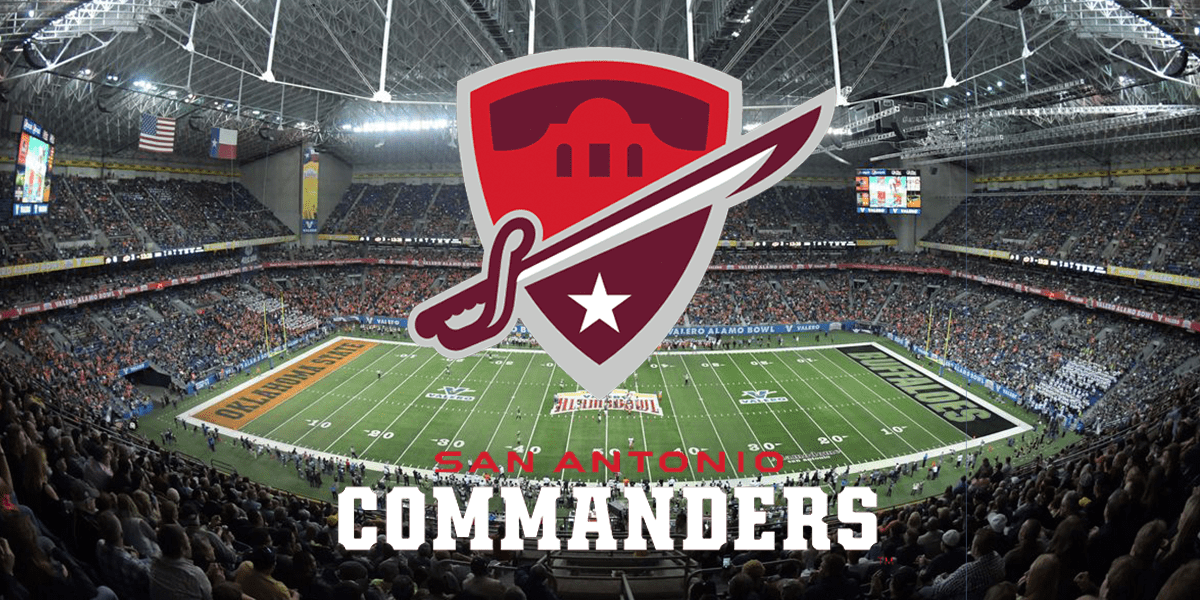
It’s about time someone took advantage of the 7th largest city in the US. How San Antonio has been over looked by so many professional sports leagues for so long is beyond me. Especially when considering their passion and loyalty to the only pro team they have, the Spurs. While the NFL continues to ignore the Alamo city, the AAF plans on enjoying the huge open football market of San Antonio. In fact, San Antonio is the closest city to the 11th largest city of Austin, with a population of nearly 1 million. Both are two of the largest cities without an NFL team and have a combined metro population of roughly 4.5 million. Essentially double the size of Kansas City, Cincinnati or Las Vegas’ metro population.
Even more interesting is the fact that San Antonio already has a stadium ready for the use of professional football. Built with the intention of attracting a professional football franchise, the Alamodome has a capacity of 64,000 with $316 million in renovations from 2017. In 2005, the Alamodome hosted three home games for the New Orleans Saints due to Hurricane Katrina and averaged 62,665, nearly selling-out every game. With the 10th largest covered-field sports stadium in the world as well as a passionate fan base in a huge city, San Antonio is arguably the best option for any professional football league to take advantage of. An obvious solution that the XFL seemed to completely ignore.
San Diego Fleet
- Western Conference
- San Diego, California: 1.4 million
- SDCCU Stadium: 70,561
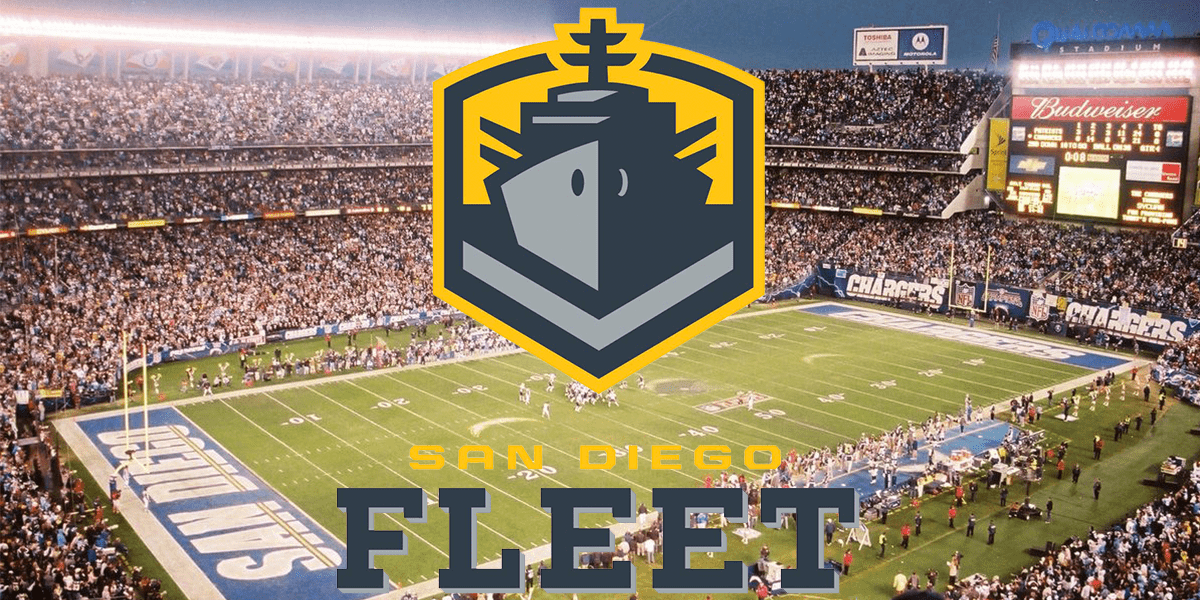
With San Diego unfortunately losing its beloved football team to the newly spoiled NFL city of Los Angeles, the 8th largest city in the US is ripe for a new professional football team. Now that the Chargers have departed, San Diego has the largest metro population without a professional football team. Some great news about this recent NFL absence for the AAF is the giant stadium waiting for another professional football tenant. SDCCU Stadium has a capacity of 70,561 and is quite literally an NFL stadium that is up for grabs.
The people of San Diego were understandably pissed when they heard the news of losing their football team in 2017. They burned jerseys and flags outside the Chargers headquarters in San Diego.
San Diego Mayor Kevin Faulconer even went as far as saying that Spanos “made a bad decision, and he will regret it…San Diego didn’t lose the Chargers, the Chargers just lost San Diego.”
The Chargers chose to leave San Diego when they weren’t granted their tax funded plan to construct a new stadium. This is something the AAF clearly won’t have an issue with. I personally hope the people of San Diego show up in droves to support their new football team as a protest to the spoiled NFL.
Possible AAF Cities for Future Expansion
In case I haven’t stated it enough, I love the selection of the 8 new AAF cities. By almost entirely choosing markets that seemed not only most in-need of a professional football franchise but also cities that could sustain one, the AAF did everything the XFL didn’t do but should have. Obviously I don’t want to jump to conclusions and we should let the success of this league play out but by selecting a majority of the cities I previously recommended for the XFL, I can’t help but include a few of my other favorite selections. If the AAF is successful, here is the list of remaining possible AAF cities for future expansion. Similar to the markets they have already selected, these are all large cities that I feel could potentially sustain a professional football team, perfect for the XFL AAF.
East
- St. Louis – former NFL city with a vacant large stadium when the XFL folds.
- Louisville – largest city in a state without professional football.
- Columbus – Ohio’s largest city that is in between two terrible NFL franchises.
- Raleigh – city that has proven sustainable for a professional sports franchise with NHL.
- Virginia Beach – the largest city in Virginia with a metro population larger than Jacksonville.
West
- Portland – one of the largest cities without an NFL team with professional sports.
- Oklahoma City – large NBA city in a state with no professional football that loves the sport.
- Omaha – a city larger than Miami or Minneapolis in a region without NFL that loves football.
- Albuquerque – the largest city in a state that is without professional football.
- El Paso – city larger than Detroit, Nashville or Memphis boarding a state without NFL.
- Oakland – once the Raiders move to Las Vegas, this city will have a vacant NFL stadium.






